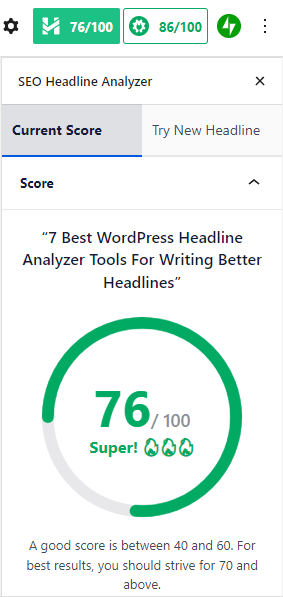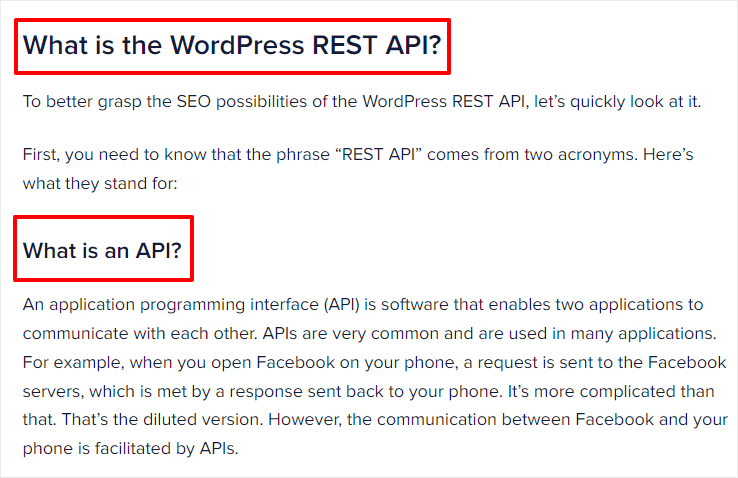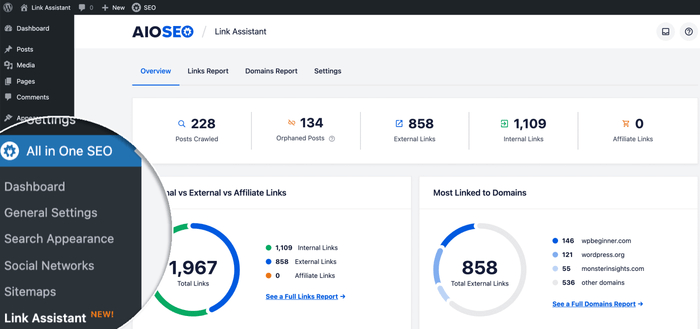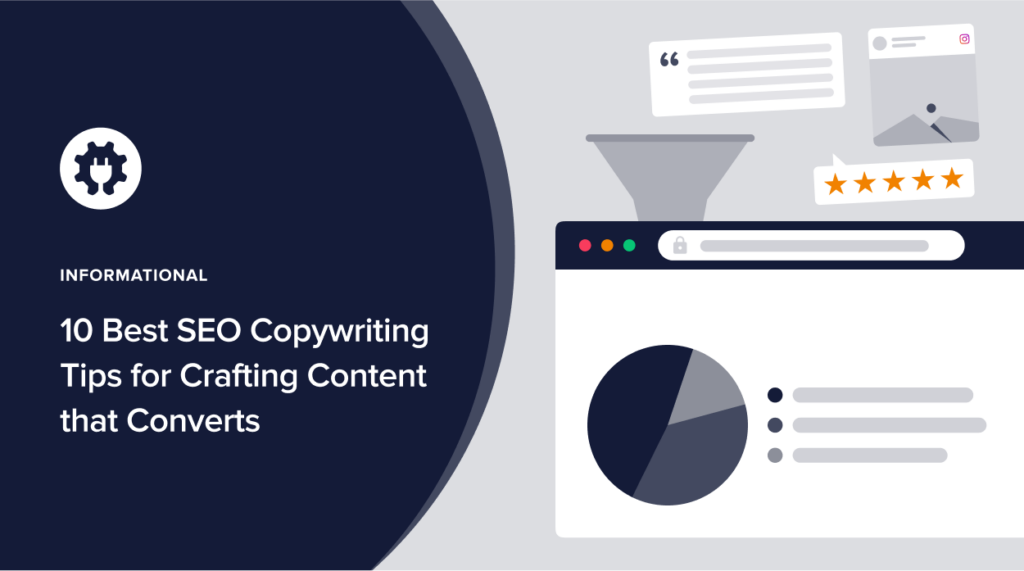Are you looking for the best SEO copywriting tips to help boost your rankings and business?
Copywriting plays a massive role in the success of your website and, ultimately, your business.
You need to know how to write copy that drives results.
This is exactly where SEO copywriting comes in.
What is SEO Copywriting?
To best understand SEO copywriting, we first need to define each term in the phrase.
- SEO: Search engine optimization (SEO) is the process of improving the effectiveness of your content and website. It involves three primary pillars — on-page SEO, off-page SEO, and technical SEO.
- Copywriting: Copywriting is the science of using words to engage readers and get them to take action on your website.
With that out of the way, we can now define SEO copywriting.
SEO copywriting is the practice of creating content that ranks and drives results.
The combination of SEO and copywriting is a powerful force that can help your business get an edge over your competitors.
4 Reasons You Need to Master SEO Copywriting
Why is SEO copywriting so important?
Let’s quickly look at three reasons you should invest in mastering it:
- Drives organic traffic: A consistent flow of organic traffic is essential to the growth of your business.SEO copywriting helps you become more visible in organic search.
- Helps build trust: A well-executed content marketing campaign is vital to winning your target audience’s trust. Copywriting is the primary tool that enables you to achieve that.
- Improves conversion rates: One of the primary roles of copywriting is to convince readers to take action. Good SEO copywriting results in a boost in your conversion rates.
- Increases social shares: Social media is a powerful tool to help your content reach a broader impact. Readers will help promote your content by sharing it with their friends if you craft high-quality content.
No online business can survive without SEO copywriting. That’s why you must master it or outsource it to those who have.
If you plan on handling your content creation, SEO copywriting should be an essential part of your SEO strategy.
SEO Copywriting Tips: 10 To Help You Turn Pro Copywriter
Ready to master SEO copywriting?
Whether you’re a blogger, small business owner, or running an ecommerce store, SEO copywriting is essential to help you drive targeted traffic to your site. In addition, it helps improve your search engine rankings and encourages users to act on your content.
Let’s quickly dive into our ten tips to help you get there.
1. Write for People First
One of the first SEO copywriting best practices you must never forget is to write for people first.
Sure, the main aim of SEO is to craft content that ranks well on search engine results pages (SERPs). However, ranking high without converting won’t do your business any good. After all, you need people to read your content and act on it.
That’s why people should always come first.
To create user-centric content:
- Make it easy to read: Keep sentences and paragraphs short.
- Get to the point: People don’t have time to sift through a gazillion words to find the answer to their search query. Get to the point quickly or risk high bounce rates.
- Create in-depth content: Give users as much information as possible, so they get the full answer to their questions. This will help establish you as an authority in your niche.
Creating content for users will help you grow an engaged audience. It will also increase the chances of your content being shared, resulting in more traffic to your site.
2. Nail Your Keyword Research
Another important element of SEO copywriting you need to master is keyword research.

Keyword research is the practice of identifying phrases and words (search terms) your target audience uses when looking for something online. Because people usually type in multi-word phrases, long-tail keywords should be your target.
You can research the right keywords for your content by using keyword tools like Semrush, Ahrefs, KWFinder by Mangools, etc. You can also use Google’s People Also Ask section and the autosuggest feature to find related keywords users input the most.
Once you’ve found your target keywords, the next step is to use them strategically. For example, if you’re writing a blog post, you can use your keywords in the:
- Headline and SEO title
- Header tags
- Content
- Metadata
- Image alt tags
The proper use of keywords will help your content rank higher in search for queries that contain that particular keyword. Also, make sure to use your keywords naturally and avoid keyword stuffing.
Targeting specific keywords in your SEO copy will help you drive the right kind of traffic to your website. As a result, you’ll enjoy better conversions and a boost in revenue.
3. Master Search Intent
For your content to be impactful and help you drive business goals, it must provide value to readers. To do this, you need to know why searchers are using the particular keywords they input into the search bar. Search intent is also a factor search algorithms consider when ranking content, making it a critical element of any SEO strategy.
While it may sound complicated, figuring search intent is quite easy. Two of the best ways to do it include:
- Use tools: keyword research tools like Semrush have a search intent feature that helps highlight the most common user intent behind a keyword.
- Study SERPs: Take a close look at SERPs and see the type of content that ranks well.
Knowing search intent is critical if you’re to create content that users will find valuable and can relate to. This will result in a boost in SEO metrics like clickthrough rate, dwell time, page views, and more.
4. SEO Copywriting Focuses on Quality, Not Quantity
One mistake many marketers make when writing content is to focus on quantity at the expense of the quality of content produced. While churning out many articles may increase the chances of your website ranking, it certainly won’t improve conversions. Great content takes time and effort. While you may not produce much content, the quality will pay off in better conversion rates.
Remember, SEO copywriting should result in both ranking and conversions. If you get one without the other, you’re still missing out on many opportunities.
The best way to create content that ranks and converts is to focus more on quality than quantity. And the best way to do that is to follow Google’s E-A-T standards. Doing so will help ensure that your readers will keep coming back for more. It also increases the chances of your content being shared. Both have a positive impact on your rankings and conversions.
The biggest advantage of creating quality, in-depth content is that people will remember it and refer to it often. They’ll also share it on social media and other platforms.
High-quality content also helps you differentiate yourself from the competition. It also goes a long way in helping you prove your expertise on the subject you’re writing about.
5. Craft Compelling Headlines and Title Tags
Your headlines play a huge role in how search engines rank your content. They also help users determine whether your content will meet their intent or not.
That’s why you must craft compelling SEO-friendly headlines.

To do this:
- Include your keyword, preferably as close to the beginning as possible
- Craft a headline that meets search intent
- Use action words to spur readers into action
- Keep it simple and avoid being clever
Your headline is your elevator pitch. It’s your first opportunity to get users to click on your URL on SERPs. It’s also a key element to successful on-page SEO.
You should also craft optimized title tags, apart from crafting a compelling headline. Title tags are an HTML element used to specify the title of a webpage and are shown on SERPs as your content’s headline. Written well, they can help you rank well, and users will want to click. AIOSEO can help you create optimized title tags. To do so, scroll down to the bottom of the page you’re editing to find AIOSEO’s settings. Under the General tab, you’ll find a field to input your title tag.
Optimize it by including your keyword and keeping it within the recommended character limit.
6. Create Your Header Tags with Users and Search Engines in Mind
Header tags are an important part of your copy. They are an excellent way of breaking up your content.

They also play an essential role in effective SEO copywriting. That’s because you can strategically use them to:
- Use your keywords strategically
- Structure your content and improve UX
- Help you rank for featured snippets
Check out this guide to better understand what header tags are and how to use them effectively.
7. Don’t Neglect Your Metadata
An essential aspect of SEO you shouldn’t neglect when crafting content is your metadata. Metadata refers to HTML tags added to a web page to help search engines and users better understand what your page is about.
Some common examples include:
- SEO titles
- Meta descriptions
- Alt tags
Optimizing your metadata doesn’t have a direct impact on your rankings. However, if optimized well, it can help increase your CTR. This, in turn, signals to search engines that your content is valuable, resulting in your content ranking better.
Make sure to give your metadata some careful thought. Crafting it well can make the difference between searchers clicking your link or not.
8. Internal Linking is an Important Element of SEO Copywriting
Internal linking is one of the most overlooked elements of SEO copywriting. With Google saying that links are among the top three criteria used for ranking content, every content creator must have an internal linking strategy they use to ensure content:
- Ranks well
- Offers users a better on-page experience
- Provides more resources for those who want to delve deeper into a topic
Thankfully, if you’re an AIOSEO Pro user, you can do this on autopilot — thanks to Link Assistant. Link Assistant is a powerful tool that searches for related posts and suggests anchor text you can use. If you don’t like the suggested link or anchor text, you can always reject the link or edit the anchor text.

Link building is a powerful on-page SEO best practice you should consider as you master SEO copywriting. Link Assistant will help ensure your internal links are strategically placed. It also enables you to audit your outbound links, making it easy to remove irrelevant ones.
9. Consider User Experience
When crafting content, take users into account by envisioning the experience they’ll have as they interact with your content.
You must make it easy for them to find the answers they’re looking for easily. Also, ensure they don’t struggle to get the flow of your content. To achieve this:
- Keep your content simple: Avoid jargon and complicated words. Aim for good readability scores, which means your content is easy to read and understand.
- Write for clarity, not cleverness: From word choice to sentence structure to the examples you use, aim to convey your message as clearly as possible.
- Format your content well: Use images, header tags, and white space to format your content to make it easy to read and digest.
If you’re an AIOSEO user, crafting content that provides a positive user experience is easier as the plugin helps you with the above aspects. The Page Analysis report shows you where you need to simplify your language, when you have large walls of text, and a few other tips to make your content easier to read.
Considering user experience is a great way to reduce bounce rates while improving other important metrics such as dwell time, page views, etc.
10. Create Content With a Purpose
A good content strategy is focused on achieving a particular result. That’s why every piece of content you create should serve a purpose — it must have a goal. Some of the goals you can set for your content include:
- Brand awareness
- Lead generation
- Product education
- Build trust
- Attract backlinks
- Driving sales
Your content should help move your visitors along your buyer journey. It must result in them taking specific action on your website. To achieve that, you must determine the purpose of your content right from the start. This will help you target the right keywords, meet search intent, and create content that converts.
SEO Copywriting Tips: Use These 10 to Craft Content that Converts
With so much content being published on the internet, getting yours noticed can be a challenge. Not only that, but getting people to click on your URL on SERPs is a second challenge you’ll encounter in your digital marketing efforts.
The solution to both is SEO copywriting.
Using the ten SEO copywriting tips outlined above, you’re better able to craft content that ranks and converts. To help increase the chances of your content ranking well in Google search, you also need a powerful WordPress SEO plugin like AIOSEO to help ensure you’ve applied all the SEO best practices to your content and website.
If you haven’t downloaded AIOSEO yet, there’s no better time than now. So, go ahead and download it here.
Disclosure: Our content is reader-supported. This means if you click on some of our links, then we may earn a commission. We only recommend products that we believe will add value to our readers.

